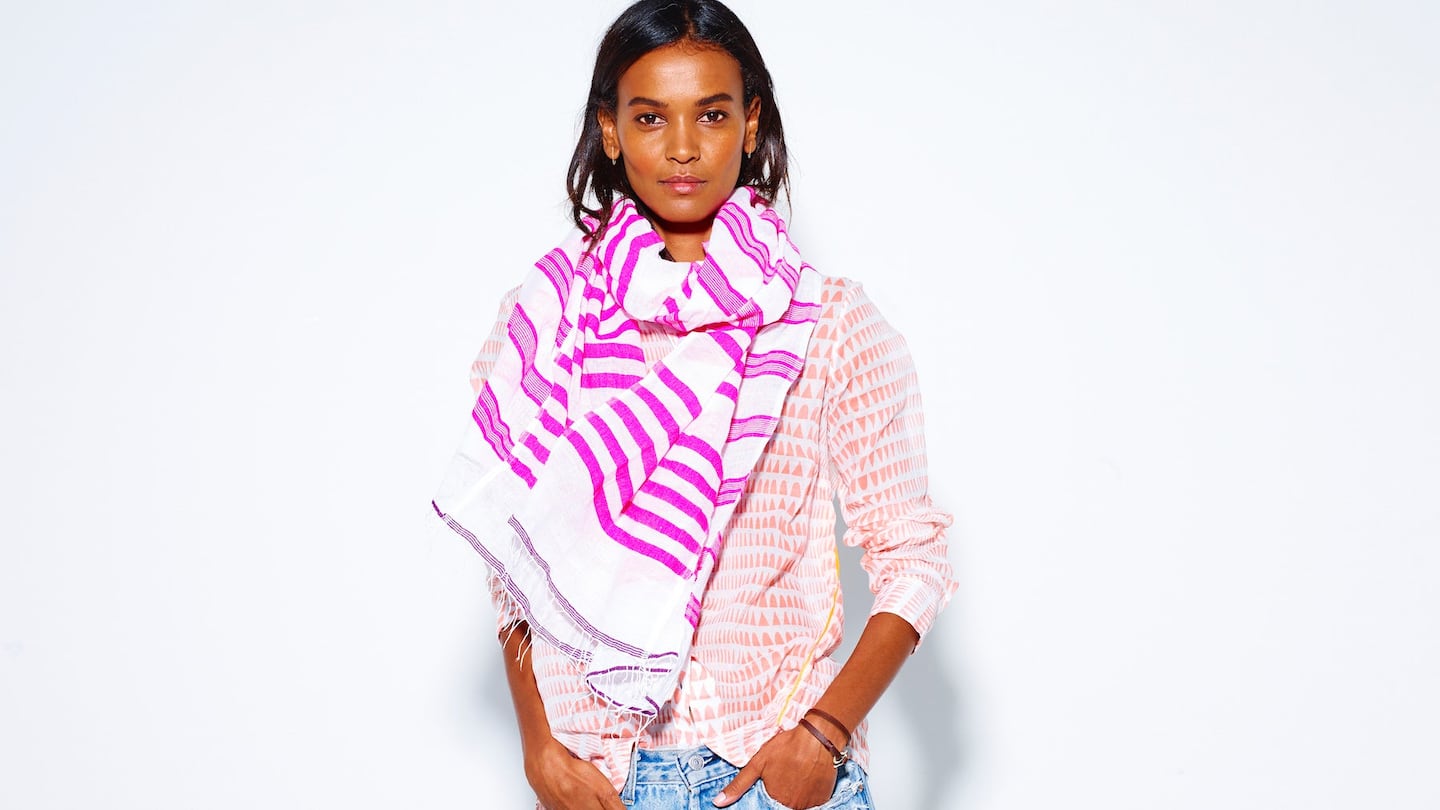
The Business of Fashion
Agenda-setting intelligence, analysis and advice for the global fashion community.

Agenda-setting intelligence, analysis and advice for the global fashion community.

ADDIS ABABA, Ethiopia — There is nothing quite like the open-air markets in Africa. They are saturated with colour and brimming with energy. It was during a walk through my favourite artisanal bazaar in Addis, filled with traditional Ethiopian weaving, that the idea first took root that I could cultivate a fashion line, right here in my hometown.
Lemlem means “to bloom” in Amharic and my philosophy in starting this line in Ethiopia was that Africa could give rise to a successful global brand that lays down a local value chain — revitalising international demand for traditional craftsmanship and creating jobs.
Overall, many designers take inspiration from Africa, but few actually make high-end fashion that is inherently African, in Africa. I think this is due to the deep-seated notion that it simply cannot be done. So for Africa to join the global fashion system, we must dispel two of the biggest misconceptions holding back investment in the continent.
1. There is too much red tape to succeed
ADVERTISEMENT
At first glance, the continent seems like a complicated place to do business — full of challenges with regulations, infrastructure and management.
I understand this well from my own experience. My label still grapples with lengthy, bureaucratic tax and customs processes and gaps in infrastructure — for example, the frequent power shortages at our site in Addis — can interrupt production and delay shipping. What’s more, in a country where only an estimated 2 percent of the population has access to the internet, the “email culture” in which a decision can be communicated and acted upon quickly has yet to take hold.
However, I take a long-term view. These obstacles are real but they are changing. In Ethiopia, the authorities are making a special effort to attract investors and build out the textile industry. Many Chinese factories are setting up facilities in the country to capitalise on these opportunities. Labour cost and availability are obviously a big part of Ethiopia’s appeal — but so are its government incentives and pro-business regulations.
As for bridging differences in management style, this requires nurturing deep relationships with local partners and working with them to create a better business climate. At Lemlem, we partner with local workshops: our business depends on their hard work, and their business depends on ours. Only through that mutual commitment can we overcome the uncertainties of manufacturing in a developing region.
2. Africa needs charity more than investment
It’s often a forgone conclusion that Africa is a place of intense need. And as the continent’s 54 countries pass through varying stages of development, there certainly are major economic, social and political challenges that must be addressed.
Charity is definitely still needed. However, building businesses in Africa employs workers and creates more long-lasting, sustainable impact. Nothing says it better than the proverb: "Give a man a fish and you feed him for a day; teach a man to fish and you feed him for a lifetime."
What is more, building strong domestic businesses can provide local people with a creative, rewarding vocation. In eight years, Lemlem has employed hundreds of weavers, allowing them to not only raise families and send their children to school — but also creating work that they take pride in. The excitement in their eyes when they see the clothes they made featured in Vogue is unimaginable.
ADVERTISEMENT
On a macro scale, the emerging markets in Africa are soaring. Africa is home to six of the top ten fastest-growing economies in the world, it boasts the world’s fastest-growing middle class and has a rapidly emerging class of high-net-worth individuals that is growing at more than twice the rate of its peer group in Asia.
To match this, a new movement of local designers are launching brands that — instead of just manufacturing on the continent, borrowing from it or romanticising about it — are truly African brands. As businesses like Lemlem develop, we are gaining the confidence to spread our wings, expand manufacturing into other African countries and product categories, and present a new point of view that captures the imagination of consumers and retailers in a sea of sameness.
Now more than ever, it is time to set aside the misconceptions that Africa is too poor or too complex for the fashion industry to invest in. We must invest money, talent and resources in building brands that are made in — and for — Africa.
Liya Kebede is the founder of Lemlem and the Liya Kebede Foundation.
The views expressed in Op-Ed pieces are those of the author and do not necessarily reflect the views of The Business of Fashion.
Join the discussion on BoF Voices, a new platform where the global fashion community can come together to express and exchange ideas and opinions on the most important topics facing fashion today.
This week’s round-up of global markets fashion business news also features Latin American mall giants, Nigerian craft entrepreneurs and the mixed picture of China’s luxury market.
Resourceful leaders are turning to creative contingency plans in the face of a national energy crisis, crumbling infrastructure, economic stagnation and social unrest.
This week’s round-up of global markets fashion business news also features the China Duty Free Group, Uniqlo’s Japanese owner and a pan-African e-commerce platform in Côte d’Ivoire.
Affluent members of the Indian diaspora are underserved by fashion retailers, but dedicated e-commerce sites are not a silver bullet for Indian designers aiming to reach them.